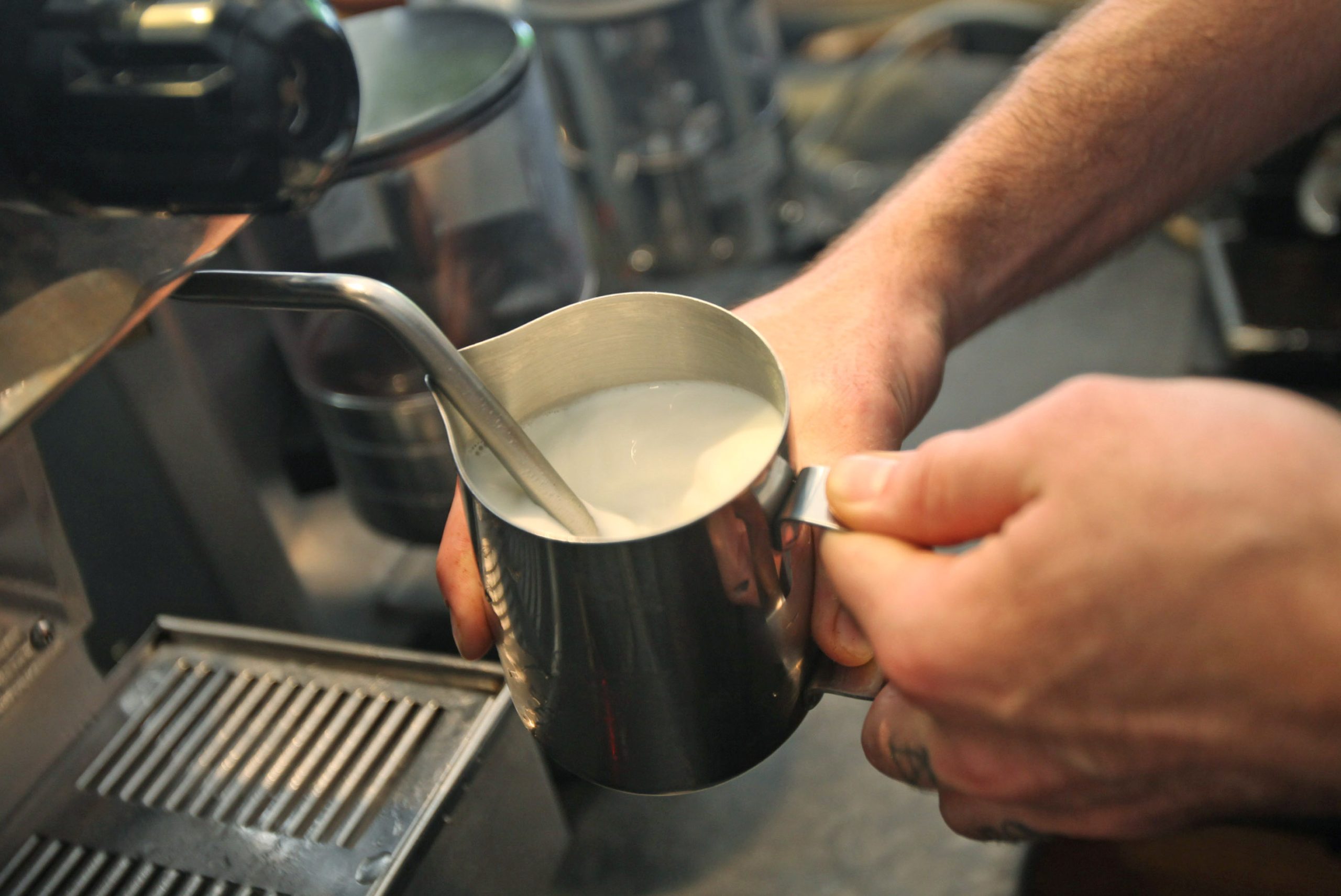Amid decades-long souring of milk sales in the United States, big dairy groups have now turned to sponsoring coffee bars in high schools to help skim profits from the trendy—and milk-heavy—latte drinks popular with teens, according to a report by the Associated Press.
A $5,000 dairy grant to a high school in North Dakota helped buy an espresso machine that makes 150-calorie latte drinks containing 8 ounces of milk, for instance. The school went through 530 gallons of milk just for the lattes this school year, according to the food-service director for the school district.
Likewise, a Florida dairy group offers schools grants worth $6,000 to outfit their coffee bars. The campaign is called “moo-lah for schools,” which refers to lattes as “moo brew.” The group says the coffee bars are an opportunity to “serve 8 oz. of milk with 2 oz. of coffee and added flavorings that fit into your school wellness policy.” One of the explicit goals of the grant program is to get students who “might not normally select milk with their school meals to consume milk.”
It’s unclear how popular the dairy-sponsored coffee bars will be nationwide—or how successful they’ll be at hooking a new generation of dairy drinkers. But it’s the latest attempt by the industry to get a grip on its dwindling market. Milk consumption has declined by 40 percent since 1975.
Dairy insiders say the industry has gotten a raw deal as milk-alternatives such as soy milk, rice milk, and almond milk have become more popular. To try to squeeze out competition and get abreast of the situation, industry leaders have pushed the Food and Drug Administration to bar non-dairy milk-alternative beverages from using the word “milk” on their labels and marketing.
In response, former FDA Commissioner Scott Gottlieb last year noted that milk labeling regulations reference lactating animals, leading him to the keen observation that “you know, an almond doesn’t lactate.”
Dairy groups also blame their curdling sales figures on the public’s changing appetites. With fat no longer vilified in current dieting trends, skim milk’s popularity has gone down the drain. Dairy groups hope that coffee flavorings in lattes will help matters. Since the lattes sold in schools will still have to adhere to nutrition restrictions set by the US Department of Agriculture, the lattes will have to include either fat-free or low-fat milk and be 12 ounces or less.
Not everyone is happy with the coffee-bar sponsorship. The American Academy of Pediatrics discourages children from caffeine consumption, citing blood pressure and heart-rate effects as well as sleep problems and headaches.


